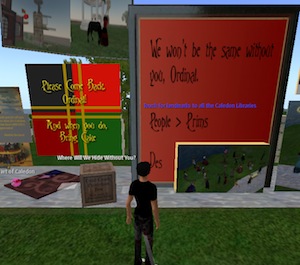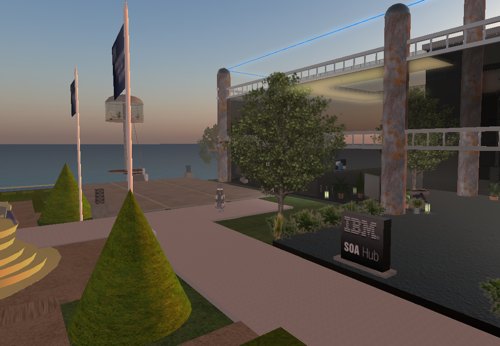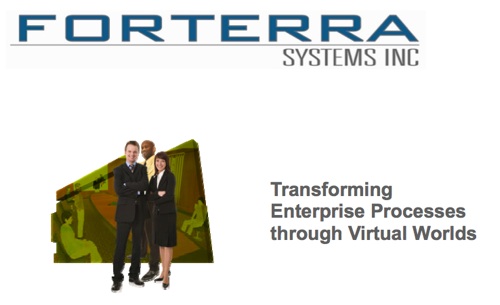 1. One of Second Life’s most innovative content creators, Ordinal Malaprop, has shuttered his business. Find out why.
1. One of Second Life’s most innovative content creators, Ordinal Malaprop, has shuttered his business. Find out why.
2. Forterra have had some business challenges over recent months including laying off staff at the end of 2009. Their OLIVE virtual environment has been bought out by the Science Applications International Corporation. All the details here – this will hopefully be a positive outcome for a virtual environment under somewhat of a cloud.
3. Twinity continues its expansion with a growth in Virtual London: “These areas will include famous buildings and monuments, from the Houses of Parliament, Buckingham Palace to the Millennium Bridge, and the Trocadero. With this, Virtual London, will have grown to the east and south of its present spread, while also marking a foray across the virtual Thames.”
4. Virtual World Best Practices in Education 2010: the call for presentations has gone out. Their website contains all the information you need.
5. The University of WA have announced the finalists of their Machinima Challenge. You can read all the details on the excellent UWA in SL blog, but here’s the list of finalists:
MASTERDARK FOOTMAN, Dallas, Texas, USA
The Heart of UWACOLEMARIE SOLEIL, Florida, USA
UWA Machinima ChallengePYEWACKET BELLMAN, New York City, USA
University of Western Australia in Second LifeCHANTAL HARVEY, Maastricht, Netherlands
University of Western Australia in Second LifeCISKO VANDEVERRE, Berlin, Germany
SEEKSOPHIA YATES, Lancaster, Massachusetts, USA
The Challenge – Architecture, Teaching, Research Arts on the UWA simsIONO ALLEN, Paris, France
Seek WisdomGLASZ DECUIR, San Sebastian, Spain
MachinimUWA: UWA in Second Life, Achieving International ExcellenceLASLOPANTOMIK YAO, Barcelona, Spain
MachinimUWABRADLEY DORCHESTER, Perth, Australia
MachinimUWA: Art Architecture, Research, TeachingNOVA DYSZEL, Toronto, Canada
UWA in SL ChallengeMASTERDARK FOOTMAN, Dallas, Texas, USA
UWA Jan 2010SOPHIA YATES, Lancaster, Massachusetts, USA
Second Life Virtual University of Western Australia
The winner announcement is coming up on the 8th February at 1pm SL time, with Torley Linden making an appearance.
 It’s fairly well recognised now that virtual environments provide a powerful collaboration solution for business -it’s just widespread adoption that’s yet to occur as real-world ROI cases are still fairly sparse.
It’s fairly well recognised now that virtual environments provide a powerful collaboration solution for business -it’s just widespread adoption that’s yet to occur as real-world ROI cases are still fairly sparse. 




Recent Comments